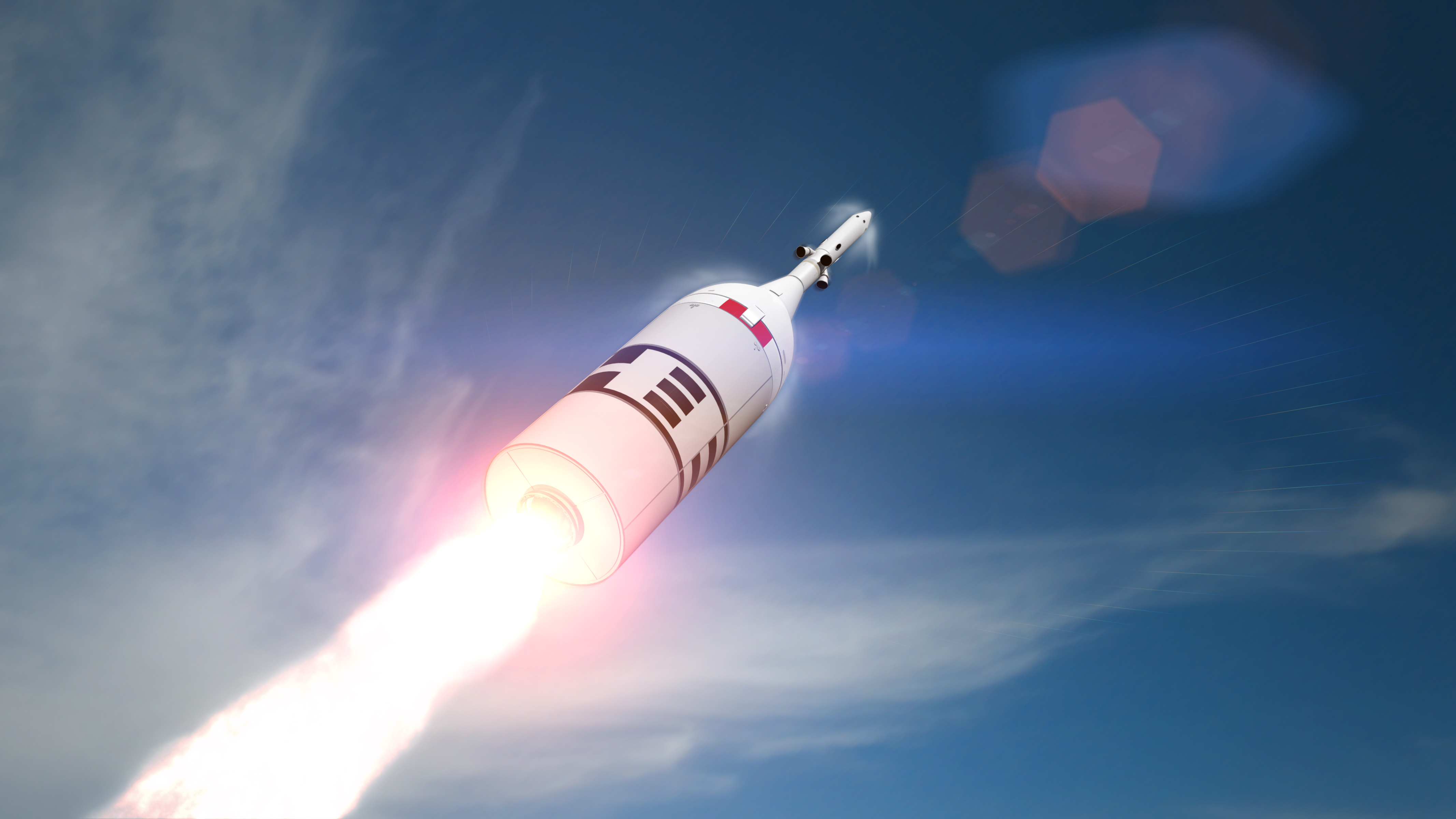NASA Sets Launch Date for Orion Spacecraft Abort System Test
Mark your calendars for June 12.
NASA will test the launch abort system of its new crewed Orion capsule on June 12, marking the second escape system test for the agency's next crewed spaceship.
"The test will show Orion's Launch Abort System can carry a crew to safety in case of an emergency during launch," NASA officials wrote in a Twitter update Wednesday (Feb. 20).
Called Ascent Abort-2, the upcoming uncrewed test will launch from a pad at Cape Canaveral Air Force Station in Florida and last less than 3 minutes. Once Orion reaches an altitude of 31,000 feet (9,448 meters) about 55 seconds after liftoff, the tower-mounted abort rocket motor will rip the Orion space capsule from its booster to simulate a launch emergency escape.
Related: How Risky Spacecraft Launch Aborts Work (Infographic)

That abort maneuver will fling the Orion capsule up 2 miles (3 km) in just 15 seconds, according to a NASA video description. At 44,000 feet (13,411 m), a jettison motor will pull the abort system tower free of the Orion capsule, but NASA does not plan to recover the capsule itself.
Instead, the Orion capsule will jettison its flight data recorders so a NASA recovery team can retrieve them later. The capsule itself will crash into the Atlantic Ocean since it is not equipped with parachutes that would slow a typical Orion landing for splashdown.
Like its name suggest, Abort Ascent-2 is the second abort system test for Orion. the first, called Pad Abort-1, launched in May 2010 at White Sands Missile Range in New Mexico to demonstrate a launchpad escape.
Get the Space.com Newsletter
Breaking space news, the latest updates on rocket launches, skywatching events and more!
Orion is designed to launch on NASA's new Space Launch System megarocket, which is currently under development. The first uncrewed SLS launch, called Exploration Mission 1, is scheduled for mid-2020 with the first crewed Orion mission (Exploration Mission 2) to follow in mid-2022.
Email Tariq Malik at tmalik@space.com or follow him @tariqjmalik. Follow us @Spacedotcom and Facebook.
Join our Space Forums to keep talking space on the latest missions, night sky and more! And if you have a news tip, correction or comment, let us know at: community@space.com.

Tariq is the Editor-in-Chief of Space.com and joined the team in 2001, first as an intern and staff writer, and later as an editor. He covers human spaceflight, exploration and space science, as well as skywatching and entertainment. He became Space.com's Managing Editor in 2009 and Editor-in-Chief in 2019. Before joining Space.com, Tariq was a staff reporter for The Los Angeles Times covering education and city beats in La Habra, Fullerton and Huntington Beach. In October 2022, Tariq received the Harry Kolcum Award for excellence in space reporting from the National Space Club Florida Committee. He is also an Eagle Scout (yes, he has the Space Exploration merit badge) and went to Space Camp four times as a kid and a fifth time as an adult. He has journalism degrees from the University of Southern California and New York University. You can find Tariq at Space.com and as the co-host to the This Week In Space podcast with space historian Rod Pyle on the TWiT network. To see his latest project, you can follow Tariq on Twitter @tariqjmalik.









